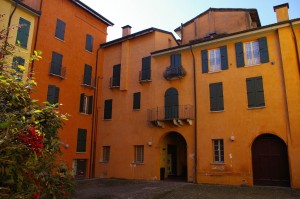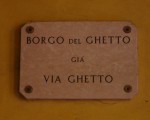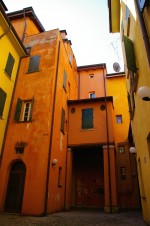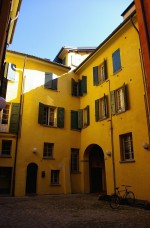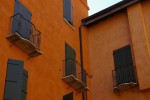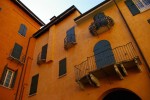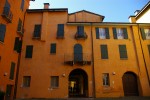Cento Ghetto
The Cento ghetto or Jewish enclosure was established in what was already the settlement area of the Jewish community since the 14th century. It includes the buildings that make the corner between the current Via Olindo Malagodi and Via Marcello Provenzali, on which the main accesses are located.
1. History
In 1624 Pope Urban VIII officially ordered the concentration of the Jews of the papal legation in the ghettos of Ferrara, Lugo and Cento, but it was only in 1636 that Bologna's papal legate Stefano Durazzo dictated the rules relating to the latter. The choice fell on a central area of the town, between Via Grande (now Via Marcello Provenzali) and the Borgo di Domani (now Via Olindo Malagodi), already inhabited by some families of Cento’s Jews.
The gates were first opened by the French in 1796 and then definitively between 1831 and 1833. In the last decades of the nineteenth century, a period of decline and emigration began which, at the beginning of the twentieth century, led to the aggregation of the Jewish community of Cento with that of Ferrara.
In the war years, the synagogue was twice devastated by the fascists, who took away all the ancient textile furnishings. In addition, with the establishment of a German command in the ghetto, part of the synagogue and books, manuscripts and documents kept in adjacent rooms were burned. What was saved was transferred to Ferrara: the portal and the nineteenth-century benches of the synagogue, an aron (closet where the Torah scrolls are kept) and a wooden bimah (the tribune from which the Torah is read), perhaps from a private oratory and some objects of sacred art. The baroque aron of the public synagogue was taken to Israel in 1954 and is housed in a synagogue in Natanya.
2. Characteristics
The structure of the ghetto of Cento is an example of houses all overlooking a main courtyard (hatser), which is accessed from Via Provenzali, and two much smaller secondary courtyards, which overlook Via Malagodi. The two passages are covered by vaults that lead to the arcades of the streets, but the access to Via Provenzali has been modified by a reconstruction of the 1960s.
After the definitive opening and the progressive abandonment by the inhabitants, the buildings underwent a progressive decay until the end of the 1990s, when a local private company began the recovery work under the guidance of the IBC (Institute for Artistic and Cultural Heritage). Thanks to these works, the external structure of the buildings and the internal courtyard overlooked by the balconies adorned with wrought iron railings, including that of the synagogue above the entrance of Via Provenzali, the access vaults and the entrance to the synagogue, an original helical staircase and the intricate paths of internal stairs are still recognisable.
Today, the ghetto area is a prestigious residential district.
Bibliography
- Istituto per i beni culturali della regione Emilia-Romagna, M. Bondoni, Simonetta - Busi, Giulio, Cultura ebraica in Emilia-Romagna, Luisè, Rimini 1987 Vai al testo digitalizzato
- Luoghi ebraici in Emilia Romagna, Touring Club Italiano, Milano-Bologna 2006
- Galuppi, Tiziana, Gli ebrei a Cento. Storia di una comunità, Baraldi, Cento 2012
Fototeca
Related Subjects
Compiling entity
- Istituto di Storia Contemporanea di Ferrara
Author
- Federica Pezzoli
- Sharon Reichel

